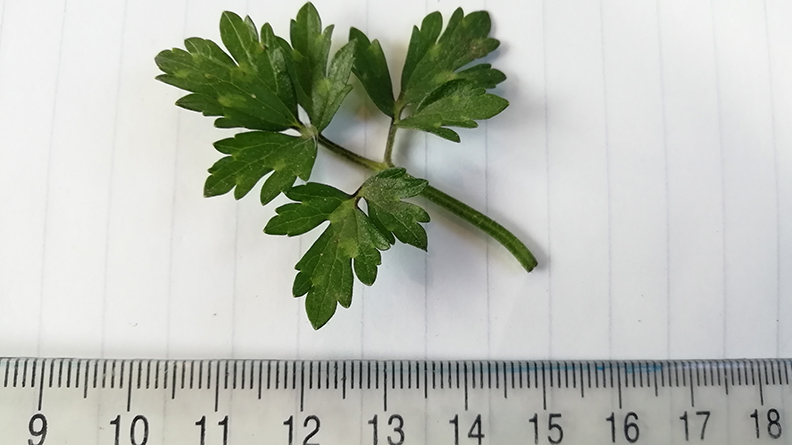Creeping buttercup identification and control
Effective strategies for identifying and managing Creeping buttercup in turf.
On this page:
Creeping Buttercup Ranunculus repens
A common and persistent weed, creeping buttercup often infests turf where the soil is moist, promoting strong growth and deep rooting.
Appearance
Creeping Buttercup has distinctive hairy leaves with three lobes and frayed edges.

Creeping buttercup leaf size comparison
The central lobe is stalked. If left unmown, this perennial produces yellow, glossy flowers, either singly or in clusters, from May to August.
Growth habit
This low-growing perennial spreads via stolons (long runners) that produce strong white roots at each node.
This allows it to spread quickly and establish a firmly anchored network of stems.

Ranunculus repens, in bloom
Conditions that favour its development
Creeping buttercup is widespread and can be found in all soil types. However, it thrives in damp conditions and indicates that soil structure and drainage need improvement.
Cultural control
Improving soil structure and drainage should be a priority to reduce moisture levels:
- Aeration: Regular aeration at varying depths aids water infiltration and encourages the natural breakdown of organic matter at the turf base. Small areas can be aerated with a hand fork, but larger areas should use pedestrian or motorised machines when conditions are dry to fracture soil and improve structure.
- Top Dressing: Applying sand top dressing with aeration when grass is growing vigorously aids water penetration and drainage.
- Raking: Raking affected areas in spring dislodges developing runners, allowing them to be removed by mowing.
- Drainage System: Installing sub-surface pipe drainage may be necessary if damp/wet conditions persist.
Chemical control
Most selective herbicides will control creeping buttercup.
Apply them in the spring after strong growth has developed, and repeat as necessary for effective eradication.












